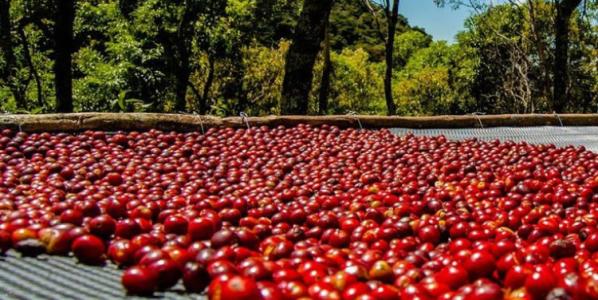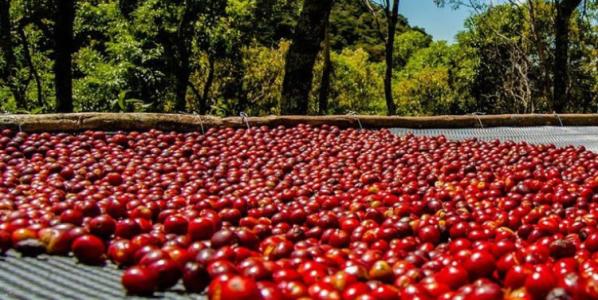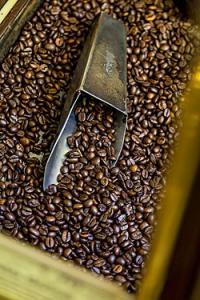Brief introduction of Grinding scale varieties of Coffee Bean processing method in Kenya
Brief introduction of Grinding scale varieties of Coffee Bean processing method in Kenya
Kenya mainly grows four major varieties, sl28, sl34, K7, and ruiru11. Sl28 is the variety with the richest flavor, but because it is not resistant to leaf rust, it can only be planted in the middle and high altitude where the leaf rust is not serious, so it has less yield and good moisture resistance of sl34, so it is suitable for planting in humid and rainy areas of middle and high altitude. K7 is a variety of iron pickup, which has a certain resistance to leaf rust and coffee fruit disease, and its flavor is not bad, so it will be planted in low-altitude disease-prone areas. The last ruiru11 is the Cameroun variety, with Robes gene, the worst flavor.
Kenya is a country that specializes in picking round beans and selling them separately, but Kenyan round beans are not common at home. Kiaga Farm, located between the Rutene River and Rwarai, is about 1900 meters above sea level and is an excellent place to grow and handle quality coffee. The size of Kenya PB is much smaller than that of Kenya AA, and the bean body is round, which is conducive to uniform heating when baking. In order to retain Kenya's unique wild flavor, moderate baking is generally used. About 40 seconds after the explosion, the beans can see obvious folds, the color is not dark, and consumers are easy to accept.
Some buyers, especially Japanese businessmen, have expressed dissatisfaction with the Kenyan coffee industry system. Some businessmen say that the quality of coffee in the country has declined, and point out that buying directly from farmers may be a way to improve the quality. But in any case, Kenya's detailed rules and regulations and sound procedures are a model for all coffee-producing countries.
(1) statistics from the overall domestic market show that Finland, with a population of 5 million, consumes 1 million packets of coffee a year, while China, with a population of 1.3 billion, now consumes only 20-400000 packets of coffee. From this comparison, we can see that the prospect of China's coffee consumption market is very broad. At the same time, the number of potential coffee consumers in China is about 200 to 250 million, which is on a par with the market of the United States, the world's largest coffee consumer. (2) in terms of growth rate, Chinese coffee consumption is still small, but the growth momentum is very considerable. China's coffee consumption is growing at an annual rate of 15%, while the world coffee consumption is growing at an annual rate of only 2%. Data also show that China's per capita coffee consumption has been increasing at a rate of 30% year by year since 1998, and China is expected to become the most potential coffee consumer in the world in the next few years.

Important Notice :
前街咖啡 FrontStreet Coffee has moved to new addredd:
FrontStreet Coffee Address: 315,Donghua East Road,GuangZhou
Tel:020 38364473
- Prev

Flavor characteristics of Rosa Coffee Taste Price treatment Grinding scale Variety
The flavor characteristics of Rosa Coffee, the price treatment method, grinding scale, varieties of flowers, tropical fruits, strong sweetness; these are the feelings that Rosa has always brought to us. Properly baked, they make you feel like sipping the fragrance of a bouquet of flowers. Maybe you don't know the story about Rosa, which is an ancient native species from Ethiopia.
- Next

Flavor description of Coffee beans of Sidamo and Yejasuffi Grinding scale varieties by Taste treatment
Flavor description of Coffee beans of Sidamo and Yegashifi Coffee varieties Grinding scale varieties in Ethiopian Japanese beans, some fruits are usually found in Ethiopian Japanese beans, such as small stones or twigs, so when grinding, we should pay special attention to Sidamo's balanced flavor, high sweetness, and its alcohol thickness is also higher than that of Yegashifi, especially in the process of sun-drying pulp fermentation.
Related
- Detailed explanation of Jadeite planting Land in Panamanian Jadeite Manor introduction to the grading system of Jadeite competitive bidding, Red bid, Green bid and Rose Summer
- Story of Coffee planting in Brenka region of Costa Rica Stonehenge Manor anaerobic heavy honey treatment of flavor mouth
- What's on the barrel of Blue Mountain Coffee beans?
- Can American coffee also pull flowers? How to use hot American style to pull out a good-looking pattern?
- Can you make a cold extract with coffee beans? What is the right proportion for cold-extracted coffee formula?
- Indonesian PWN Gold Mandrine Coffee Origin Features Flavor How to Chong? Mandolin coffee is American.
- A brief introduction to the flavor characteristics of Brazilian yellow bourbon coffee beans
- What is the effect of different water quality on the flavor of cold-extracted coffee? What kind of water is best for brewing coffee?
- Why do you think of Rose Summer whenever you mention Panamanian coffee?
- Introduction to the characteristics of authentic blue mountain coffee bean producing areas? What is the CIB Coffee Authority in Jamaica?

